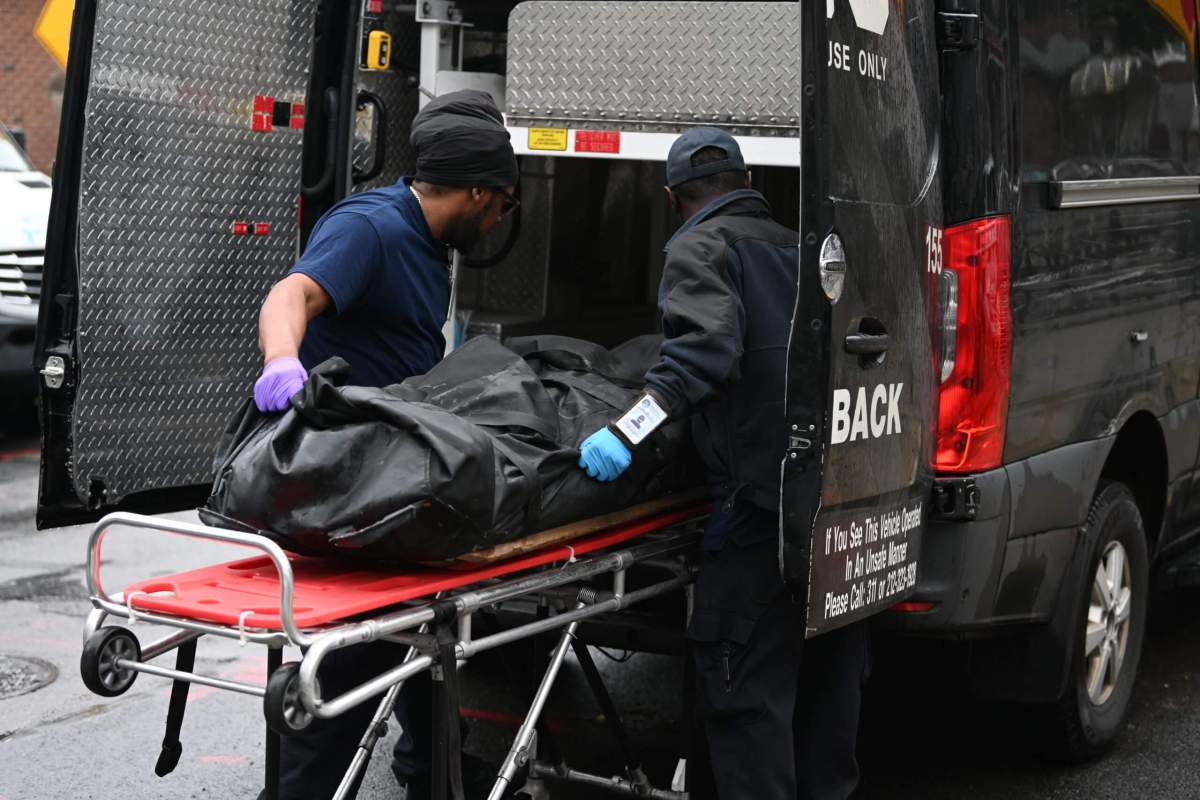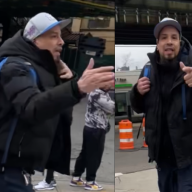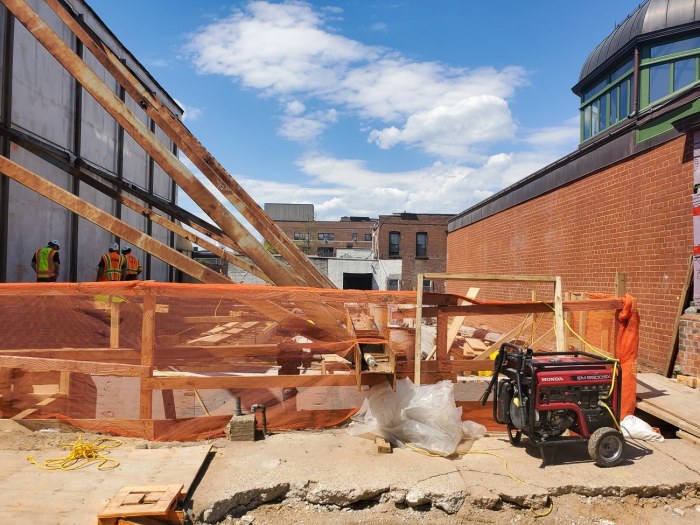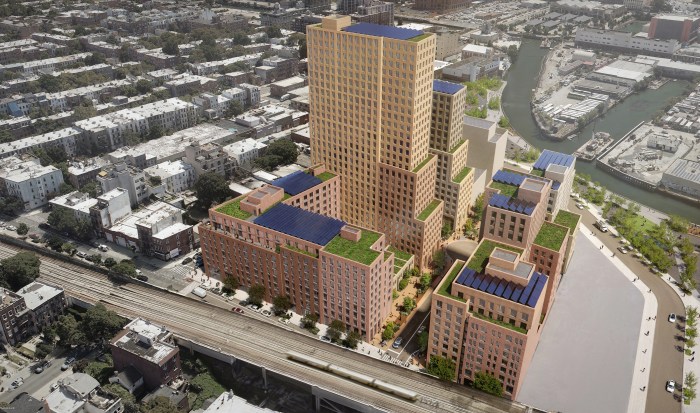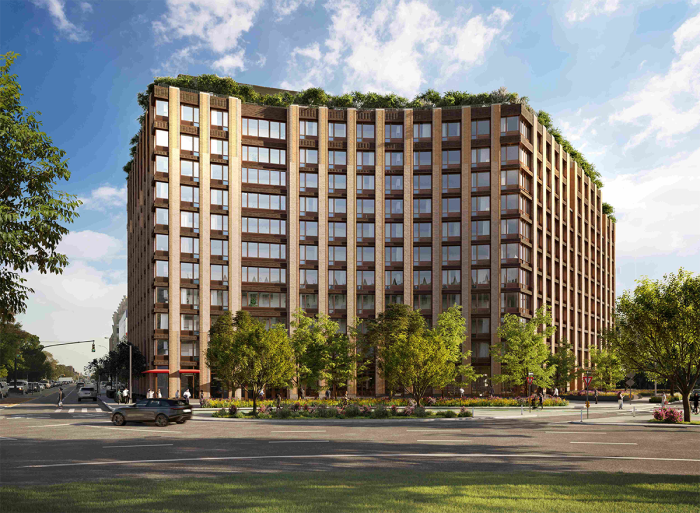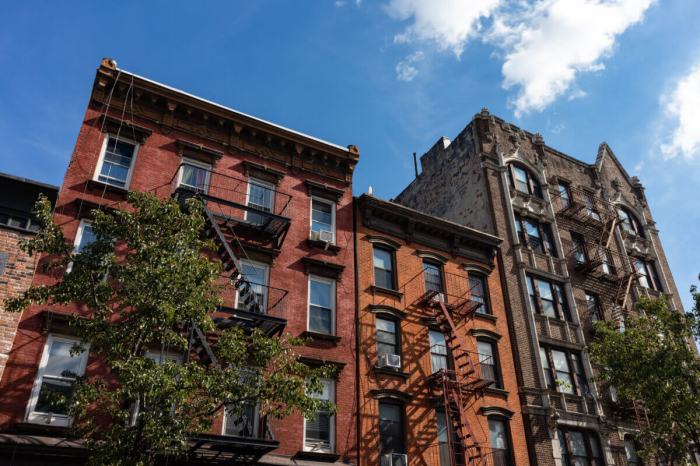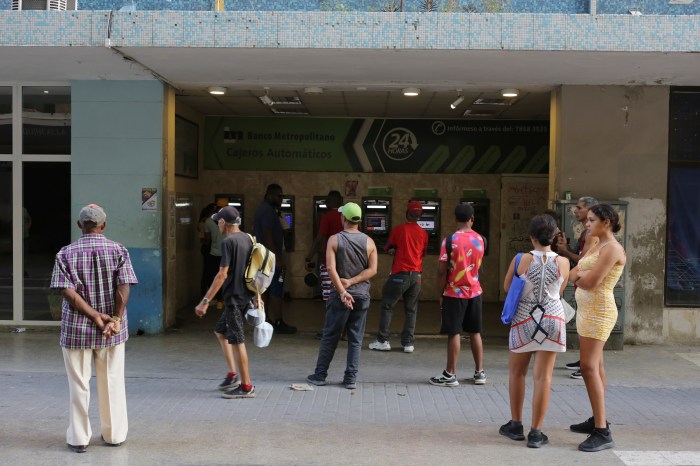To the editor,
The Brooklyn Public Library is not an art museum or a private gallery. Our exhibitions feature art that is accessible to our diverse audience and either documents Brooklyn or is related to books. As a publicly funded institution that serves the entire community, we do not offer platforms for one-sided advocacy on controversial political issues (“Images the Brooklyn Public Library doesn’t want you to see,” Feb. 17)
Our “Footprints” documentation of a current neighborhood was never intended to be the previous advocacy exhibition that was displayed in Prospect Heights. The works in our exhibition were selected because they are compatible with BPL’s documentary mission and its artistic standards. The few works in the previous show that were not included were either too large, required video installation, failed to meet artistic standards or were political cartoons.
Rather than exclude art, we included nine pieces that were never displayed in Prospect Heights. We also expanded our gallery space, which typically features 32 pieces, to encompass 54 pieces.
Instead of reading blogs written by artists who exploit the very institution that brings their art to BPL’s diverse audience, I encourage your readers to judge our exhibition with their own eyes.
Our “Footprints” exhibition is valuable because it documents a neighborhood and its residents on the cusp of change. We hope that you will agree during your next visit.
Jay Kaplan, Prospect Heights
The writer is director of Programs and Exhibitions for the Brooklyn Public Library.
Clarke’s game
To the editor,
I congratulate Rep. Yvette Clarke for directing heat at Bruce Ratner (“Wrath of Congress,” Feb. 17). It’s about time. Unfortunately, it is hard for me to take her spectacular play of race-based indignance over the Barclay’s arena naming as a serious attempt to hold Ratner accountable for anything of real merit.
After all, she did not oppose the Atlantic Yards project at a time when her opposition could have increased the real level of accountability that Ratner had to the communities. On the contrary, Clarke supported Ratner and the Yards project as a City Council member and as a Congressional candidate.
And now, as the elected member of Congress, she goes for the emotional headline — but does not support the important eminent domain lawsuit lodged by her constituents against Ratner. Nor has Clarke yet used her voice or vote even symbolically to pursue federal legislation preventing future eminent domain abuse.
The other elected official who is so “outraged” over Ratner’s dealings with Barclay’s is Assemblyman Hakeem Jeffries, who also has been silent on the eminent domain abuse lawsuit filed by his own constitutents.
We don’t have to mention the others who sold their souls to Ratner a long time ago and are now “shocked” by his behavior.
If Clarke, Jeffries and others had put Brooklyn’s interests first when it really counted, maybe Ratner would never have had the nerve to tread on Brooklyn as he continuously does. But that takes guts, not politics as usual.
The real issue is not Barclays — it is Ratner’s enduring disregard for Brooklyn in the name of profit. Maybe this is a wake-up call for some of our elected officials. Or maybe it’s time for new Brooklyn leadership.
Chris Owens, Prospect Heights
The writer competed against Clarke for the 11th district seat last year.
11th St fires away
To the editor,
Thank you for your article regarding the FDNY’s plans for a third fire truck to be temporarily relocated to 11th Street (“FDNY to 11th Street: Enough already,” Feb. 10).
Those of us who live on this block are glad to see this development is being followed by the press.
Unfortunately, the article somewhat misrepresented the story and the issue behind it.
The event was a regularly scheduled meeting hosted by the Park Slope Civic Council, and the reason that residents attended the meeting was not to “protest” the plans; rather, it was to hear from the FDNY and to let the agency understand our concerns.
It should have been noted that this was the very first time that anyone in an official capacity has communicated any information whatsoever about the FDNY’s plans.
Furthermore, the article implies that the safety of firefighters and of the larger community is being compromised by “concessions” made to the residents, without mentioning the fact that residents played no part in making these plans.
It was in the spirit of constructive dialogue that these issues were raised.
Mark Gordon, Tracy Agerton, Park Slope
The writers are co-presidents of the 11th Street Block Association
Just say no to Wal-Mart. Period.
To the editor,
I seriously disagree with your editorial stance and perspective on Wal-Mart (“Why say no to Wal-Mart,” editorial, Feb. 17). I hope you get a chance to review the PBS documentary on Wal-Mart, and take note of the relationship between the Wal-Mart corporation, foreign nations, and special interests represented within the U.S. government.
Brooklyn’s small business owners are fundamental to the revitilization of the communites they reside in. Why would we put this natural and prosperous avenue for the people of Brooklyn at risk by inviting in Wal-Mart?
Providing a fair and equitable playing field for small businesses is essential. While you’re advocating for Wal-Mart, we are over here in Park Slope keeping rents down so the grocer of 30 years doesn’t go under. There are no formulations, I can think of, that can properly balance the economic benefit, if any, of Wal-Mart, with burdens on the public, both financially as well as socially.
Wal-Mart always comes out on top. The losers, both locally and nationally, are the American public, our dignity, and ultimately our standard of living.
Worse, the stuff Wal-Mart sells doesn’t last long, and either breaks or becomes unusable quickly. I still have kitchen wear from my grandmother that works better than any of the stuff you can buy at Wal-Mart.
Wal-Mart in Brooklyn? Fuhgeddaboudit.
Charles McMellon Jr., Park Slope
• • •
To the editor,
Why say no to Wal-Mart? Your editorial identifies some of the many reasons: environmental degradation, undermining free speech, underpaying workers, and not offering health benefits. But your editorial goes off the rails when you argue that the dollars that Brooklyn consumers would throw at Wal-Mart would change the company’s bad values.
Even if we somehow could change Wal-Mart’s record by shopping there more, Brooklyn’s bucks are tiny compared to the massive Wal-Mart. Our borough is a big place, yet our entire yearly economic output is much smaller than Wal-Mart’s annual revenue. Wal-Mart would meaningfully change Brooklyn if it were here, not the reverse.
Pete Sikora, Park Slope
The writer is co-founder of Wal-Mart No Way, a Brooklyn-based anti-Wal-Mart group.
Sweetheart deal in Bridge ‘Park’
To the editor,
The first residential building in Brooklyn Bridge Park is about to get city and state approval on its financial terms and payments into the park maintenance fund. This will be the first time in the city or state that private housing will be allowed inside of any public park’s borders. As such, all terms negotiated for this building will create precedent for other residential buildings contemplated in the future.
This developer, Robert A. Levine, has been given the deal of the century:
1. He’s gotten a change of building zoning from industrial for residential, saving him millions in permitting and zoning costs. The last time someone bought this building back in the early 1980s, the city did not allow the land to be rezoned from industrial to residential use so it was quickly sold to the Jehovah Witnesses.
2. Levine got the go-ahead, again outside of community review, to add two, extremely lucrative, floors to the top of the building. At the increased height, this behemoth will be more than three times the height of the tallest building in the area, and five to 10 times higher than the majority of the residences in the surrounding community.
3. Levine will get new roads built for his building, and new sewers to accommodate the new residences inside the park. This will be done without the city getting any tax revenue for these improvements because the residents’ taxes will go to maintain their front lawn (i.e. the park). This would be the same as if homeowners were able to hold onto their taxes so that they could use the money to green up their yards, yet still demand that the city pay for sanitation, police, fire and public school services.
Robert A. Levine stands to more than double his investment. We urge the city and state to say “no” to this deal.
Judi Francis, Brooklyn Heights
Fruit flies
To the editor,
As a member of the Cobble Hill Community Supported Agriculture, I am moved to respond to “Bruise Backlash” (Feb. 3), not because our thriving CSA or our skilled farmer need any defense.
I write to address the article’s glib misunderstanding of Community Supported Agriculture. CSA members don’t join a “produce-buying club,” nor are we indulging in some fashionable desire “to explore exotic root vegetables.”
But the aspect of the CSA movement that the author trivializes with the term “eco-minded” is a source for most of us of even deeper satisfaction. CSA supports what is left of small-scale, local agriculture and strengthens sustainable farming practices. In nurturing this crucial part of our economy, we care for community and look optimistically toward a livable world for our children and grandchildren.
In the process, we do get the “beautiful, happy, organic vegetables” Elkins imagined. Yet, for many of us, as much gratification comes from the knowledge that we are eating real food, that we are connected to the seasons and the natural rhythms of life. That’s probably why most of our members delight in being educated on sweet potato diseases and were not disappointed when they found a few grubs in their corn: That was one of the joys we got with our produce, free of charge!
Martha Rowen, Brooklyn Heights
Editor’s note: No offense was intended. But CSAs are, in fact, produce-buying clubs.
Fingering Bush
To the editor,
It’s 1:30 pm on Tuesday, Jan. 31 and I’ve just gotten off the Staten Island ferry to take the Brooklyn-bound R.
The subway’s closed, streets are blocked off, police cars everywhere. Oh God no! It can’t be … Then I remember Bush is in town.
All right, I’ll walk up a few blocks to the A train. Beautiful day, happy to be alive in New York City, I love my job. Perfect time in life for a giant Snickers bar. I hand a buck and a quarter to the newsstand guy.
The thing is still frozen. Usually I have no patience, but tens of thousands of dollars in dental bills for caps, crowns and bridges remind me vaguely of the Buddhist concept of slowly savoring each morsel.
This is exactly what I’m doing as 40 police motorcycles roar by. There he is, passing before my eyes on Broad Street. Even through the tinted glass I can see the smarmy Alfred E. Newmanesque, “What me worry?” smirk.
Instinctively I stick out the middle finger of both hands and stand there quietly moving my arms up and down.
Now, some of us spend entire lifetimes searching for — and perhaps never finding —that perfect moment. Well, all I can tell you is the taste of that slowly dissolving chocolate, the caramel, nuts and nugat, the sun shining down through the canyons, and my absolute freedom to express my total contempt and disdain toward the leader of the free world: God, I love this country.
Bill Bartlett, Ditmas Park
Money wasters
To the editor:
“Gentile in tax smackdown with Bloomy” (Feb. 10) told of how CouncilmanVince Gentile wants to give homeowners a $400 tax rebate. It confirms that he is just another career politician trying to bribe voters with some crumbs.
New York City’s municipal debt had grown to $55 billion. The per-resident capital debt of $6,800 makes the Big Apple number one nationally. Each year a greater percentage of the city budget goes toward debt payments rather than funding current badly needed essential services.
Debt service in 2006 represented 12.3 percent of the budget. It is anticipated to grow to 16.6 percent by 2010. Both municipal and residential share of the debt have increased significantly over the past five years under Gentile and his City Council colleagues.
Why not use a small portion of any budget surplus to raise the $25,000 starting salary for police officers and open all public libraries evenings and weekends? The bulk of any surplus should be used to pare down this staggering long-term debt. Today’s budget surplus can quickly disappear tomorrow with a sudden change in the economy due to another 9-11 or international act of terrorism affecting our oil supply.
The city is looking for billions more in school aid and other assistance from Albany. But the state has a $55-billion long-term debt. The city is also seeking additional billions more from Washington for security and other essential programs. But Uncle Sam has over $9 trillion in long-term debt.
Robbing Peter to pay Paul just doesn’t add up. Larry Penner, Great Neck
Art attack
To the editor,
I couldn’t help laughing over the article (“Realtor censors art show,” Jan. 27) in which Nicholas Kalas claims he’s being “censored” by a real-estate office because an office co-manager took down some of his work, deeming it inappropriate for a place of business.
Granted, the co-manager was a bit unimaginative, but please, where is it written that artists have the right to show their work anywhere they like?
From what I saw in the photograph accompanying the story, chances are pretty good that I’d enjoy Kalas’s work.
But I’m also reminded of Mencken’s argument that, while no adult who wishes to write poetry for a living should be discouraged from doing so, only a fool expects and demands to make a living at it in a society where genuine creativity is rarely rewarded.
I sincerely hope that Kalas finds many new places to exhibit his art.
I also hope he stops acting like a big baby.
Ben Cosgrove, Park Slope










